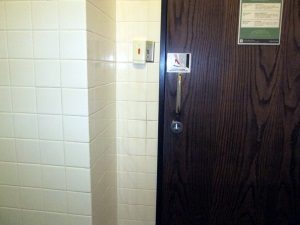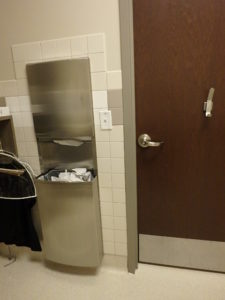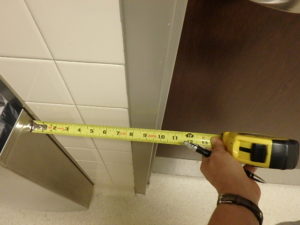|
Why do we need so much room in front of the door?
The amount of maneuvering clearances at the door depends on the approach to the door. Section 404 shows you the different ways that a person could approach the door and gives you guidance for the amount of clearance a person will need to reach for the door handle, open the door and go through.
The most well-known requirements are the forward approach pull and push.
But why do we need so much room? The rectangle shown in the figure provides the proper amount of space for a person with disabilities to reach the door handle, open the door and go through. Below are four images depicting the amount of space required for a forward approach pull side maneuvering of the door.
Interestingly enough, a door might be located in a thicker wall, or an object might be located on the same wall as the maneuvering clearance. As long as the object is no more than 8” deep, or as long as the door is not located more than 8” from the face of the wall, it will be compliant for maneuvering for forward approach pull or push side. Below are some examples:
 This door is located in a recess that is less than 8” deep. The 18” on the pull side maneuvering can include the wall that is in front of the door.  This door has a paper towel dispenser next to the 18” maneuvering clearance at the latch side of the door  Since the paper towel dispenser is less than 8” deep, it can be part of the maneuvering clearance
But there are other ways one can approach the door, and the requirements for the amount of maneuvering clearance will change. The table in section 404 shows the different approaches and the amount of space required for each. The US Access Board created instructional videos to explain the standards. Here is the one about maneuvering clearances |